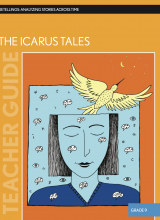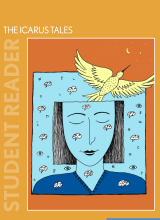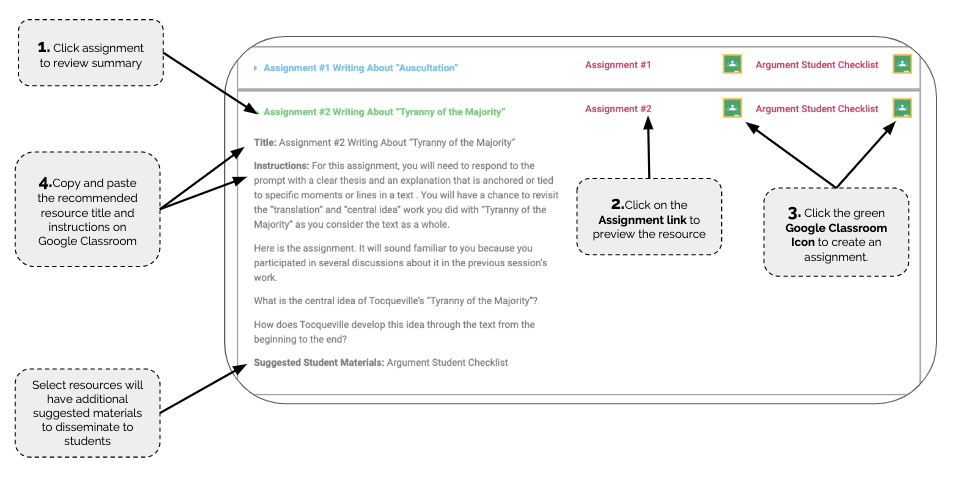The Icarus Tales - Grade 9
Italian novelist Umberto Eco said, “Books always speak of other books, and every story tells a story that has already been told.” This unit is designed around that notion of retellings—the idea that authors draw on and transform stories that have already been told, and in the process, create new meanings.
In this unit, students will read, interpret, write about, and discuss four texts: the story of Icarus as told by Ovid in Metamorphoses; Anne Sexton’s short poem “To a Friend Whose Work Has Come to Triumph”; Edward Field’s poem “Icarus”; and, finally, Kurt Vonnegut’s short story “Harrison Bergeron.” During the course of their work with these texts, students will read, write about, and discuss the texts individually and as a set, comparing their characters, sequences of events, and meanings. All of this is designed to present students with an arc of work that sensitizes them to the aspect of literature that Eco highlights above: that writers often repurpose existing texts—by retelling, transforming, reframing—for new and different ends, and that they often tell stories that have “already been told.”


Table of Contents
Writing Tasks
Title: Writing About Ovid’s “Icarus”
Instructions:
For this assignment you will write an argument about “Icarus” that answers the question in the box below. It will sound familiar to you because you participated in a discussion about it in the previous session’s work.
Imagine that in the story of Icarus, Ovid is sending a message or a warning to his readers. What is the most significant message or warning in Ovid’s Icarus tale? |
Suggested Student Materials: Interpretive_Argument Checklist
Title: Informational Writing About the Structure of Poems
Instructions:
Suggested Student Materials: Informational_Explanatory Checklist
Title: Argument Writing About the Structure of Poems
Instructions:
Suggested Student Materials: Interpretive_Argument Checklist
Title: Argument Writing About “Harrison Bergeron”
Instructions:
During the earlier parts of this unit, you read and compared three versions of the story of Icarus. For all their differences, there were similarities that clearly marked them as Icarus tales.
Vonnegut’s story, however, lacks these obvious similarities: there is no one named Icarus who flies, who crashes into the ocean, etc. And yet many of the same themes are in play. For example, all four texts deal with issues of heroism, risk, and consequences. And, as such, the thinking and work you’ve done with the three previous texts is likely to influence the way you read and think about “Harrison Bergeron.”
For this assignment you will write an argument about “Icarus” that answers the question in the box below. It will sound familiar to you because you participated in a discussion about it in the previous session’s work.
Imagine that in “Harrison Bergeron,” Vonnegut is sending a message or a warning to his readers. What is the most significant message or warning of the story? Please write a one- to two-page response to this question. As you write, consider making comparisons between Vonnegut’s story and the Icarus tales you have studied to make your argument. Thinking and talking about how “Harrison Bergeron” is specifically similar to or different from the texts by Ovid, Sexton, and Field can help you answer the question. |
Suggested Student Materials: Interpretive_Argument Checklist
Charts for Discussion
Title: Summarizing “To a Friend Whose Work Has Come to Triumph”
Teacher Manual Instructions:
Session 3
Convene the whole group and engage students in a discussion of the comprehension questions. Again, keep the discussion brief and focused on the gist of the text.
Begin by asking students to summarize what is literally happening in the poem. Capture what students say on a chart titled “Summarizing ‘To a Friend Whose Work Has Come to Triumph.’”
Title: Interpretations: Sexton’s “To a Friend Whose Work Has Come to Triumph”
Teacher Manual Instructions:
Session 3
When just a few minutes are remaining in the discussion, ask a student or two to summarize the major interpretations that have been developed along with the evidence to support those interpretations. Capture the interpretations and evidence for all to see on a chart titled “Interpretations: Sexton’s ‘To a Friend Whose Work Has Come to Triumph.’”
Title: Summarizing Field’s “Icarus”
Teacher Manual Instructions:
Session 4
Reconvene the class and negotiate a whole-class response to the comprehension questions. Capture this work on a chart titled “Summarizing Field’s ‘Icarus.’”
Title: “Harrison Bergeron” as an Icarus Tale: Similarities and Differences
Teacher Manual Instructions:
Session 7
Ask students to re-create the same chart in their notebooks. Review the categories on the chart with the class. Point out that each of the columns includes room for notes or sentences that tell how a moment is similar to one or more of the other versions, or different from it in an important or notable way. In the case of moments that do not have a corollary in one of the other tales, students may indicate how or why the moment is unique to “Harrison Bergeron.”
Checks for Understanding
Title: Summarizing Ovid’s Icarus Story
Teacher Manual Instructions:
Session 1
Convene the whole group and engage students in a short discussion of the comprehension questions.
Begin the comprehension discussion by asking students to retell the sequence of events. Their summary should include when and where this story is set. Capture what students say on a chart titled “Summarizing Ovid’s Icarus Story.” Encourage students to stick with what is literally happening in the story.
In order to encourage wide participation, you might call on one pair to begin the retelling and then move on to other pairs to continue the retelling until all pairs have contributed to the retelling of the entire story.
Title: Our Questions About the Icarus Tales
Teacher Manual Instructions:
Session 1
Finally, ask students what questions they have after reading this story. Capture their questions on a chart titled “Our Questions About the Icarus Tales.” This will be a working chart that the class will use to track questions students have about all of the Icarus texts.
Title: Interpretations: Ovid’s Icarus Tale
Teacher Manual Instructions:
Session 2
When just a few minutes are remaining in the discussion, ask a student or two to summarize the major interpretations that have been developed along with the evidence to support those interpretations. Capture the interpretations and evidence for all to see on a chart titled “Interpretations: Ovid’s Icarus Tale.”
Title: Interpretations: Field’s “Icarus”
Teacher Manual Instructions:
Session 4
When just a few minutes are remaining in the discussion, ask a student or two to summarize the major interpretations that have been developed along with the evidence to support those interpretations. Capture the interpretations and evidence for all to see on a chart titled “Interpretations: Field’s ‘Icarus.’”
Return to the “Questions about the Icarus Tales” chart that students added to earlier in the session and check with students to see if the class discussion resolved any of the questions. As before, allow students to respond to their peers’ questions as they are able, and consider setting aside a few minutes at the end of this class or the beginning of the next to look up (or to allow students to look up) answers to questions that can easily be researched. Wonderings about the story, the characters, and the choices they make may also merit a few minutes of whole-class discussion.
Title: Summarizing Similarities and Differences Between the Icarus Tales
Teacher Manual Instructions:
Session 5
When all of the charts have been posted, give students 3-5 minutes to conduct a “gallery walk” where they walk around the room to read and compare all of the charts.
Reconvene the class and review, once again, the questions on the board.
Conduct a whole-class discussion about the information on the charts. This conversation is a chance for the class to notice overlaps across groups and to benefit from the thinking each group did. Initiate the whole-class conversation with this question:
Let’s take a look at what you all think are the differences and similarities between the three versions of Icarus. How do Field’s and Sexton’s poems transform or alter Ovid’s Icarus story?
During this conversation, be sure to capture the class’s thinking on a new chart titled “Summarizing Similarities and Differences Between the Icarus Tales.”
Title: Summarizing “Harrison Bergeron”
Teacher Manual Instructions:
Session 6
Convene the whole group and engage students in a discussion of the comprehension questions. Again, keep the discussion brief and focused on the gist of the text.
Begin by asking students to summarize what is literally happening in the story. Capture student responses on a chart titled “Summarizing ‘Harrison Bergeron.’”
Title: Is “Harrison Bergeron” an Icarus story?
Teacher Manual Instructions:
Session 7
Reconvene the class and facilitate a discussion about the question “How is ‘Harrison Bergeron’ similar to or different from the Icarus tales you have studied?”
Work with the class to distill and enter the pair/trio thinking onto the master version of the “‘Harrison Bergeron’ as an Icarus Tale: Similarities and Differences” chart.
During this discussion, students should make any necessary revisions or additions to the notebook versions of their chart.
Dedicate the remainder of the closing meeting to a discussion of these questions:
1. What traits or qualities make something an “Icarus story”? (That is, how would we know if a story was an Icarus story?)
2. Is “Harrison Bergeron” an “Icarus story”?
Capture the class’s thinking and noticing on a two-column chart like the one on the next page.
Title: Interpretations: “Harrison Bergeron”
Teacher Manual Instructions:
Session 8
Ask students to put their desks or chairs in a circle so everyone can see and hear each other. Revisit the interpretive question with the class. Then, invite the students to begin the discussion. As students talk, take notes on the interpretations that are being formed in response to the question. When necessary, press students to anchor their responses in evidence from the text.
When just a few minutes are remaining in the discussion, ask a student or two to summarize the major interpretations that have been developed along with the evidence to support those interpretations. Chart the interpretations and evidence for all to see. Title the chart “Interpretations: ‘Harrison Bergeron.’”
Title:What We Have Learned About How Retellings Make New Meanings
Teacher Manual Instructions:
Session 9
Inquiry reflection: Reconvene the class and review the main question on the board:
» What have you learned about how retellings make new meanings?
Conduct a whole-class discussion about the question. Encourage the class to reference the gallery charts and the texts during the discussion.
Distill and capture the group’s thinking on a new chart titled “What We Have Learned About How Retellings Make New Meanings.”
Check for understanding: After a brief conversation, ask students to take two minutes to record their personal thoughts on this question in their literacy notebooks. Encourage students to add something specific to their own learn- ing from this unit, rather than simply repeating the discussion points from the class. Even if they touch on some of the same ideas, they can share a specific example or moment that stood out to them.
Independent Reading
Title: Book Interview
Instructions:
Display a copy of the “Book Interview” sheet for the class to see and distribute copies to students.
Using one of the books from the classroom library, model for students how to interview a book and how to fill out the sheet. Answer any questions students have about the form and its terminology.
Give students time to interview three books and to enter their findings on the “Book Interview” sheet.
Title: Book Pass
Instructions:
Organize students’ desks into a circle (or, if this is not possible, determine a very clear path for books to pass through the group).
Explain the purpose of a book pass:
A book pass is another way to expose students to the texts available in the classroom library. A book pass requires students to use their book interviewing skills. A book pass is a chance for students to find titles to add to their “Books I’d Like to Read” list.
Display a copy of the “Book Pass” for the class to see and pass out copies to students.
Demonstrate for the class how a person goes about making an entry on the form. Since students will need to write quickly, show how an author can be listed just by last name and first initial, and demonstrate how a student can abbreviate a long title if necessary. What matters is that they have enough information to track down the book again later if they need to.
Give each student one book (or magazine). Tell them it doesn’t matter which text they start with, because they will see all—or at least many of—the books. (Be sure you have one title for each student in the circle.)
Choose a direction for passing.
After students receive a book, they should immediately record the author’s name (if the text is a book) and title on the “Book Pass” form.
Give students one minute to interview each book following the procedure established in the previous session.
At the end of one minute, call “pass.” At this time, students should make an entry in the comments column and pass the book to the next student.
Continue the book pass until each student has interviewed all the books.
Title: Book Recommendation
Instructions:
Distribute copies of the “Book Recommendation” form to students and give them time to craft or begin crafting their first review. Students can choose to write about a book they’ve completed recently or one they remember well from past reading.
Title: Goals for My Reading Life
Instructions:
Display a copy of “Goals for My Reading Life” for the class to see and distribute copies to students.
Use this time to review how to fill out the goals sheet. Be sure to show students how they can use the charts to generate ideas for answers to the “Goals” questions.
Take a moment to stress the value and function of the “Books I’d Like to Read” list. Point out that this list is a tool that serves the same function as a bedside table for some readers: It is a place to store up titles or books that are “next in line.” Remind the class that readers constantly have their eyes open for “next” texts. A “Books I’d Like to Read List” is a way to prevent aimless and unproductive castings around for new reading materials. It’s a planning tool.
Explain that at the beginning of each marking period, each student will fill out a new goals sheet; at at the end of each marking period, students will take a few minutes to review their goals statements and reflect on their efforts to meet them.
Answer any questions students have about the “Goals for My Reading Life” forms.
Give students time to complete the form and set a deadline for submission. You may decide to photocopy these to keep a set for yourself. Return the forms to students during the next session and have them attach the form to a page in their notebook or save it for their student portfolio (see Creating a Student Portfolio).
Title: Reading Log
Teacher Manual Instructions:
Show students how to set up a “Reading Log” in their notebook. They should be sure to enter it in their table of contents. You may decide to distribute sticky notes so that students can flag this page. Use the model on the next page to guide your efforts.
Notice the column titled “Date Completed/# of Pages Read.” This column is a place for students to record, and receive credit for, the reading of texts that did not require a “cover-to-cover” experience. Be sure to point out that reading sections of several texts for specific purposes is not the same as skipping aimlessly from book to book to book. The former often indicates purposefulness and interest; the latter can indicate confusion or disengagement.
After students have set up the reading log—including proper headings, creating the grid, etc.—demonstrate how to make an entry.
Answer any questions students have about the log.
Remind students that the reading log is a tool to be used in conjunction with the “Goals” sheets. Students track their reading in the log and then use the log to evaluate their progress toward their goals.
If you plan to use student portfolios this year, consider introducing them at this time using some version of the information in the section that follows. Review Creating a Student Portfolio in advance to be sure you have thought through some of the important questions for portfolio work.
Unit Resources
Title: Informational Writing About the Structure of Poems
Title: Argument Writing About the Structure of Poems
Title: Grades 9 and 10 – Interpretive_Argument Rubric
Title: Grades 9 and 10 – Informational_Explanatory Rubric
Title: Scaffolds and Modifications: Descriptions and Use
